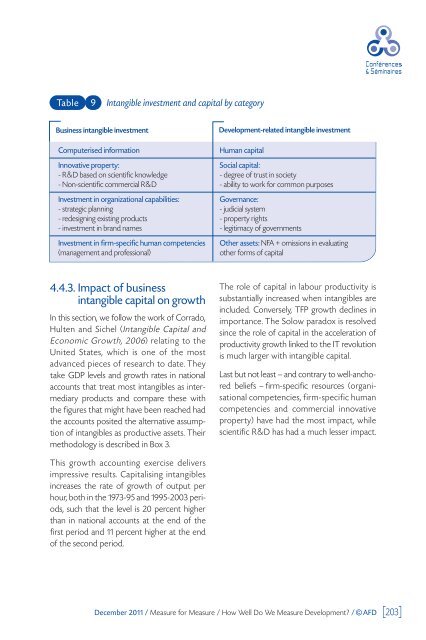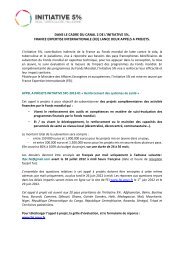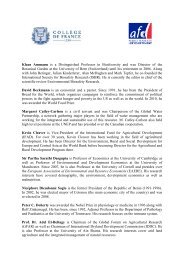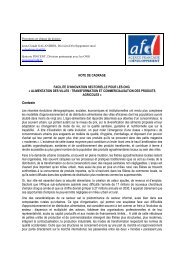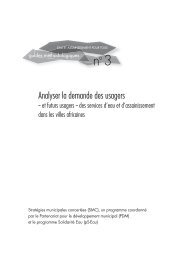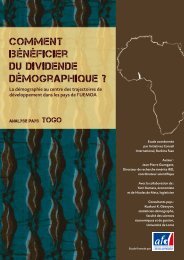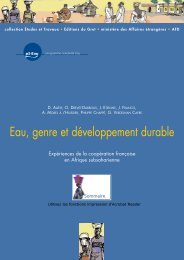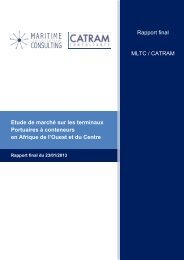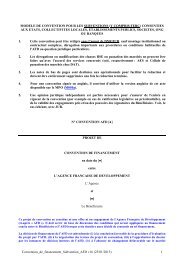Paris School of Economics - L'Agence Française de Développement
Paris School of Economics - L'Agence Française de Développement
Paris School of Economics - L'Agence Française de Développement
Create successful ePaper yourself
Turn your PDF publications into a flip-book with our unique Google optimized e-Paper software.
Table<br />
9<br />
Intangible investment and capital by category<br />
Business intangible investment Development-related intangible investment<br />
Computerised information Human capital<br />
Innovative property: Social capital:<br />
- R&D based on scientific knowledge - <strong>de</strong>gree <strong>of</strong> trust in society<br />
- Non-scientific commercial R&D - ability to work for common purposes<br />
Investment in organizational capabilities: Governance:<br />
- strategic planning - judicial system<br />
- re<strong>de</strong>signing existing products - property rights<br />
- investment in brand names - legitimacy <strong>of</strong> governments<br />
Investment in firm-specific human competencies Other assets: NFA + omissions in evaluating<br />
(management and pr<strong>of</strong>essional) other forms <strong>of</strong> capital<br />
4.4.3. Impact <strong>of</strong> business<br />
intangible capital on growth<br />
In this section, we follow the work <strong>of</strong> Corrado,<br />
Hulten and Sichel (Intangible Capital and<br />
Economic Growth, 2006) relating to the<br />
United States, which is one <strong>of</strong> the most<br />
advanced pieces <strong>of</strong> research to date. They<br />
take GDP levels and growth rates in national<br />
accounts that treat most intangibles as intermediary<br />
products and compare these with<br />
the figures that might have been reached had<br />
the accounts posited the alternative assumption<br />
<strong>of</strong> intangibles as productive assets. Their<br />
methodology is <strong>de</strong>scribed in Box 3.<br />
This growth accounting exercise <strong>de</strong>livers<br />
impressive results. Capitalising intangibles<br />
increases the rate <strong>of</strong> growth <strong>of</strong> output per<br />
hour, both in the 1973-95 and 1995-2003 periods,<br />
such that the level is 20 percent higher<br />
than in national accounts at the end <strong>of</strong> the<br />
first period and 11 percent higher at the end<br />
<strong>of</strong> the second period.<br />
The role <strong>of</strong> capital in labour productivity is<br />
substantially increased when intangibles are<br />
inclu<strong>de</strong>d. Conversely, TFP growth <strong>de</strong>clines in<br />
importance. The Solow paradox is resolved<br />
since the role <strong>of</strong> capital in the acceleration <strong>of</strong><br />
productivity growth linked to the IT revolution<br />
is much larger with intangible capital.<br />
Last but not least — and contrary to well-anchored<br />
beliefs — firm-specific resources (organisational<br />
competencies, firm-specific human<br />
competencies and commercial innovative<br />
property) have had the most impact, while<br />
scientific R&D has had a much lesser impact.<br />
December 2011 / Measure for Measure / How Well Do We Measure Development? / © AFD [ 203]


